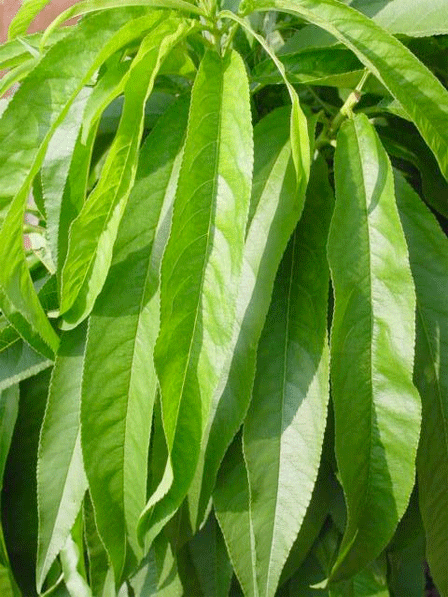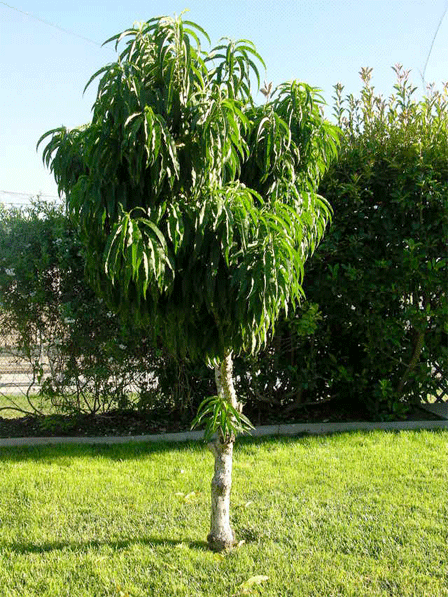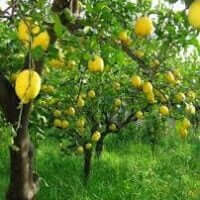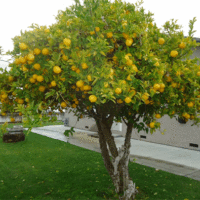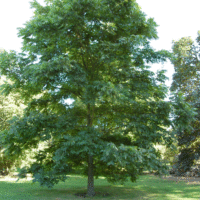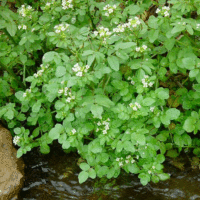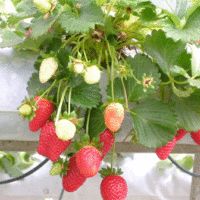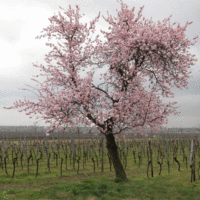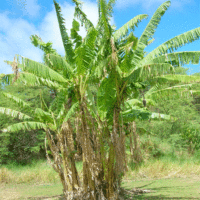| Botanical name | Prunus persica |
|---|---|
| Plant Care |  Deciduous Deciduous – Sheds Its Leaves Annually  Full Sun Full Sun – Prefers 6 or more hours of sun per day. Frost Hardy Frost Hardy – Can Handle frost without damage.  Moderate Watering Moderate Watering – Requires Regular Watering.  Pruning Required Pruning Required – Needs to be Pruned.  Non Indigenous Non Indigenous – Exotic to South Africa. |
| Size | |
| Categories | |
| Flowers | August September This tree bears white to pink flowers in early Spring. |
| Common name(s) | Peaches and nectarines |
| Origin | |
| Foliage | This tree has (10-15 cm) long, green foliage. |
| Planting instructions | Peaches and nectarines both prefer a climate of cold winters and hot summers, as on the Highveld. Space trees 5m apart. |
| Maintenance | Water them thoroughly every three weeks during dry weather in summer. Water well once a week when trees are flowering and fruit-setting. To prune young peach trees, cut the stem off just above a bud (if this has not already been done in the nursery), approximately 500mm above ground level. This will encourage branching, and eventually result in the development of the main scaffold limbs. |
| Fruit | Pick fruit when just soft to the touch. Peaches and nectarines do ripen to some extent after being picked, but will soon lose flavour. |
| Common pests and diseases | Fruit fly, codling moth, false codling moth and scale. Powdery mildew and leaf curl may become a problem under conditions of high humidity. |
| Recommended varieties | ‘Desert Gold’, large fruit with yellow flesh, semi-clingstone, ripens October; ‘De Wet’, yellow flesh with yellow- green skin, semi-clingstone, ripens October; ‘Kakamas’, yellow canning peach, clingstone, ripens January; ‘Oom Sarel’, yellow flesh, ripens December; ‘Orion’, green-white flesh, skin with a red blush, semi-clingstone, ripens October; ‘Prof. I. Malherbe’, canning peach with yellow flesh, clingstone, ripens October. |
| Harvest | Pick fruit when just soft to the touch. Peaches and nectarines do ripen to some extent after being picked, but will soon lose flavour. |
Prunus persica (Peaches and nectarines)
- Botanical name: Prunus persica
- Common name(s): Peaches and nectarines
- Categories: Fruits and Vegetables
Plant description:
Peaches and nectarines both prefer a climate of cold winters and hot summers, as on the Highveld. If the winter is not cold enough, the trees suffer from delayed foliation. There are many varieties, each with different cold requirements. Ask your local nurseryman or horticulturist for advice on the best varieties for your region. All peaches and nectarines are self-fertile.
Family: Rosaceae
Synonym: Amygdalus persica
Botanical Pronunciation: PROO-nus PER-see-kuh
Prunus persica requirements and features
info on these icons
Moderate Maintenance
Requires moderate maintenance.
Prohibited Use Notice: No Data Scraping Allowed Except for Search Engine Indexing:
The content provided on PlantInfo.co.za is intended for personal, non-commercial use only. Unauthorized extraction, reproduction, or use of the data, including scraping, for any purpose other than search engine indexing is strictly prohibited. Violations of these terms may result in legal action. By accessing and using this website, you agree to comply with these conditions and acknowledge the legal restrictions on the use of our content.
August September
This tree bears white to pink flowers in early Spring.
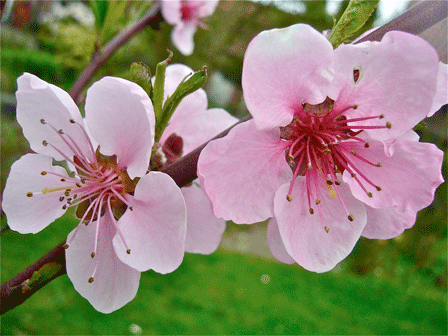
This tree has (10-15 cm) long, green foliage.
